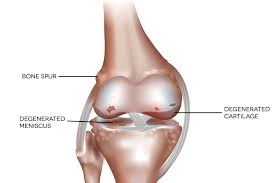In a groundbreaking development, researchers at the University of Montana, in collaboration with their partners, have unveiled a revolutionary method for generating human cartilage of the head and neck. This breakthrough holds immense promise for addressing critical needs in regenerative medicine, particularly for individuals born with craniofacial defects and those facing cartilage damage due to injuries.
Led by biology professor Mark Grimes from UM’s Division of Biological Sciences, the team achieved a significant milestone by inducing stem cells to transform into the cell type responsible for craniofacial cartilage formation. Stem cells, with their unique ability to replicate and differentiate into various cell types, serve as the cornerstone of this innovative approach.
“Our research focuses on harnessing the potential of neural crest cells, the progenitors of craniofacial cartilage, to generate specialized organoids mimicking human tissue architecture,” explained Grimes. These organoids, simplified versions of organs, offer a platform for studying human tissues in ways that were previously impossible using traditional methods.
Grimes emphasized the urgent need for novel techniques to regenerate human cartilage, particularly for the thousands of children born annually in the U.S. with craniofacial defects. Additionally, the ability to cultivate cartilage in the laboratory opens doors to effective treatments for repairing cartilage damage resulting from injuries.
The research, published in the journal iScience, sheds light on the intricate mechanisms underlying cartilage cell differentiation. By analyzing gene expression data at both the RNA and protein levels, the team unraveled the complex signaling pathways involved in the transformation of stem cells into elastic cartilage, such as that found in human ears.
“To develop a protocol for craniofacial cartilage generation suitable for transplantation using human stem cells, it’s crucial to understand the intricacies of human-specific differentiation mechanisms,” Grimes explained. The ultimate goal is to leverage patient-derived stem cells to engineer craniofacial cartilage in the laboratory, offering personalized solutions for individuals in need.
The interdisciplinary collaboration brought together expertise from various fields, including biology, pathology, and machine learning. Lauren Foltz, Nagashree Avabhrath, and Jean-Marc Lanchy from UM contributed to the study, alongside collaborators Bradly Peterson of Pathology Consultants of Western Montana and Tyler Levy, Anthony Possemato, and Majd Ariss of Cell Signaling Technology in Massachusetts.
As the research paves the way for transformative advancements in regenerative medicine, it offers hope for enhancing the lives of individuals affected by craniofacial defects and injuries. With continued innovation and collaboration, the potential for regenerating human cartilage and restoring function to those in need becomes increasingly tangible.












